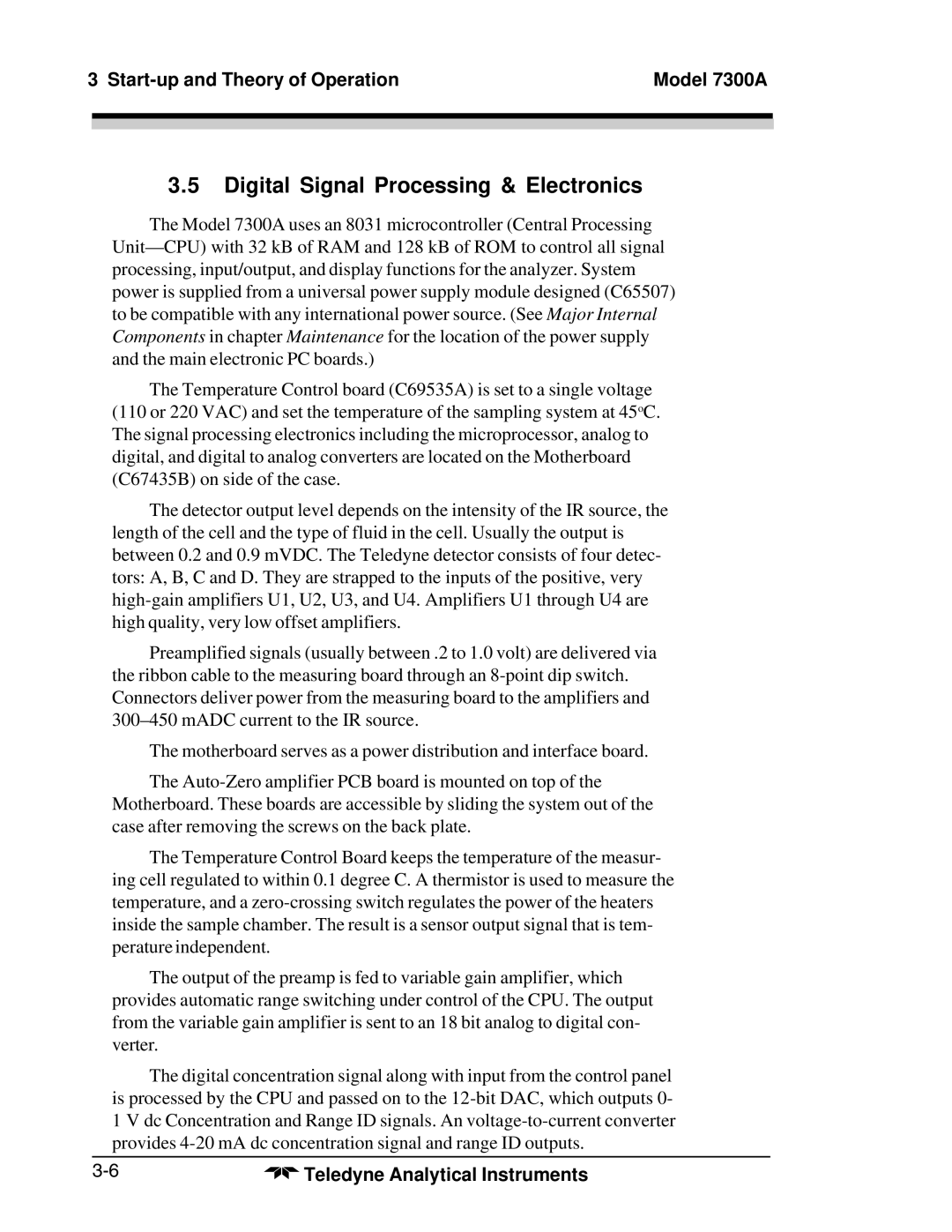3 | Model 7300A | |
|
|
|
|
|
|
|
|
|
3.5Digital Signal Processing & Electronics
The Model 7300A uses an 8031 microcontroller (Central Processing
The Temperature Control board (C69535A) is set to a single voltage
(110 or 220 VAC) and set the temperature of the sampling system at 45oC. The signal processing electronics including the microprocessor, analog to digital, and digital to analog converters are located on the Motherboard (C67435B) on side of the case.
The detector output level depends on the intensity of the IR source, the length of the cell and the type of fluid in the cell. Usually the output is between 0.2 and 0.9 mVDC. The Teledyne detector consists of four detec- tors: A, B, C and D. They are strapped to the inputs of the positive, very
Preamplified signals (usually between .2 to 1.0 volt) are delivered via the ribbon cable to the measuring board through an
The motherboard serves as a power distribution and interface board.
The
The Temperature Control Board keeps the temperature of the measur- ing cell regulated to within 0.1 degree C. A thermistor is used to measure the temperature, and a
The output of the preamp is fed to variable gain amplifier, which provides automatic range switching under control of the CPU. The output from the variable gain amplifier is sent to an 18 bit analog to digital con- verter.
The digital concentration signal along with input from the control panel is processed by the CPU and passed on to the
1V dc Concentration and Range ID signals. An
Teledyne Analytical Instruments |
